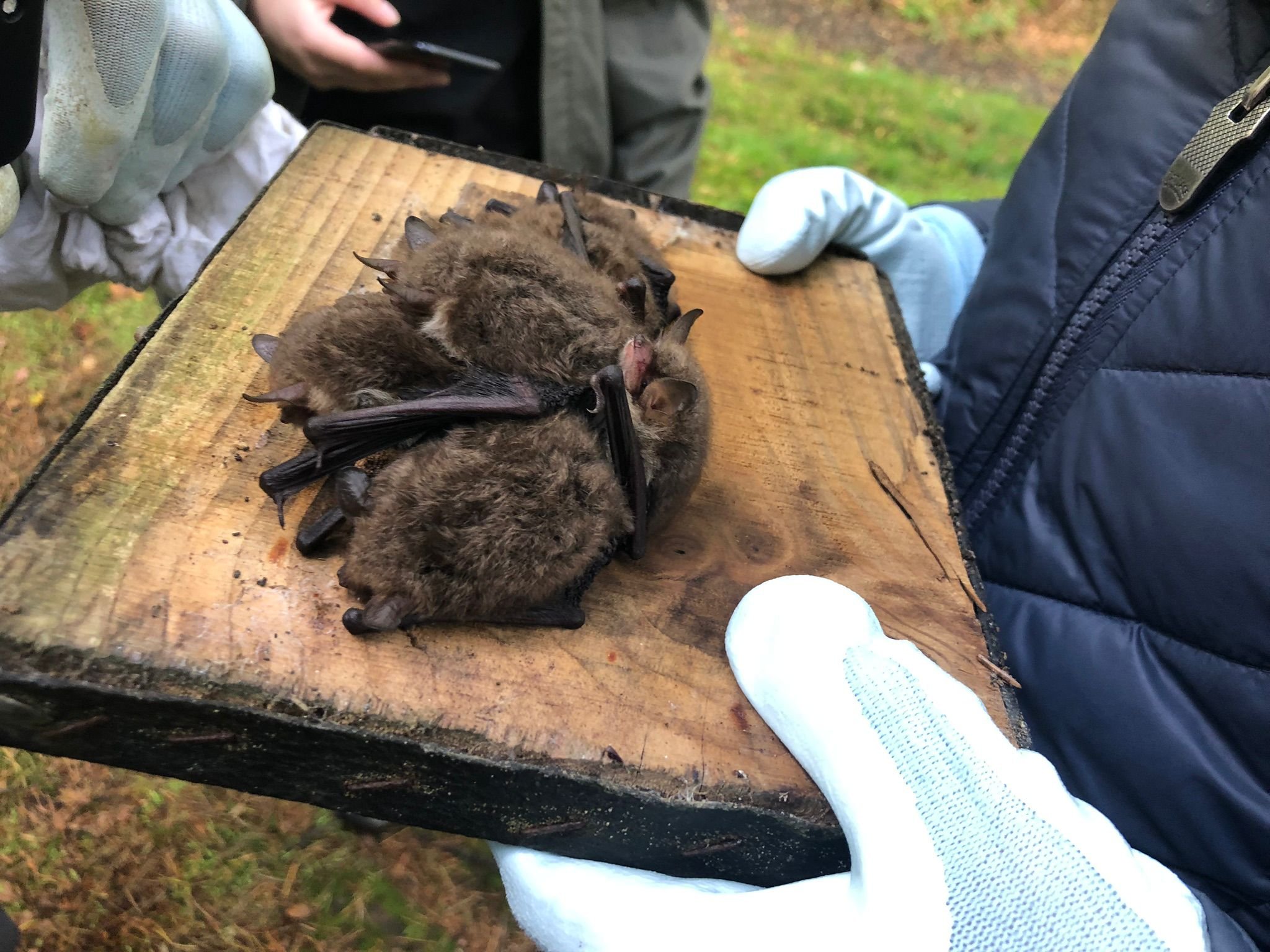How do bats choose their roosts?
Understanding how and where bats choose to roost is crucial for both development and renovation projects and for conservation efforts. The 10 bat species recorded in Scotland all have their own preferences for roosting sites, shaped by their ecological niche, physical adaptations and the balance of conditions needed for their survival and reproduction.
Let’s take a look at some of the key variables that influence roost choice…
Bats found roosting in a bat box.
#1 Solo or Social
Solitary males have very different roost requirements than females and their pups. For soprano pipistrelles, a single male bat will roost in a roughly thumb-sized crevice. A maternity roost will need the space for (potentially) hundreds of females, and be warm enough to suit this year’s fast growing youngsters.
There are many more thumb-sized crevices than suitable maternity roosts, so the type of roost will impact how we help you navigate your renovation project.
#2 Seasonal Roosting
Bats move roosts throughout the year, looking for different conditions to suit different stages of their life cycle.
Over winter, bats hibernate in roosts with stable, low temperatures and high humidity. These roosts (called ‘hibernacula’) are used by bats year after year, chosen for their unique conditions!
Bats roosting in a crevice.
#3 Roost Fidelity
A maternity roost of hundreds of soprano pipistrelles and their pups isn’t going to move regularly, but for female Natterer’s bats moving regularly with their pups is no problem. Natterer’s maternity roosts are smaller (low 10s of bats, instead of 100s) and with their regular moves they will need a network of suitable roosts to call home.
#4 Foraging Opportunities
Noctules (our largest species) will travel vast distances in a single night, while shy, slow-flying brown long eared bats will only roost close to the woodland habitat they use to forage. Each species has their own preferences and requirements for suitable foraging habitat, including but not limited to:
Proximity to water (Daubenton’s bats are specialists at feeding over still waters)
Woodland
Farmland
Hedgerows
Altitude can even make a difference!
Implications for Development
Depending on the nature and location of your project, the level of surveys required and possible mitigation needed will vary. The only way to know for sure is to get a professional ecologist on your project team as soon as possible. We take the pressure off you by completing your surveys, taking care of licensing and advising on any other steps needed to complete your project!
If you need a bat survey (or think you might) get in touch with our team of specialist ecologists!
Or read more of our latest blogs here:






